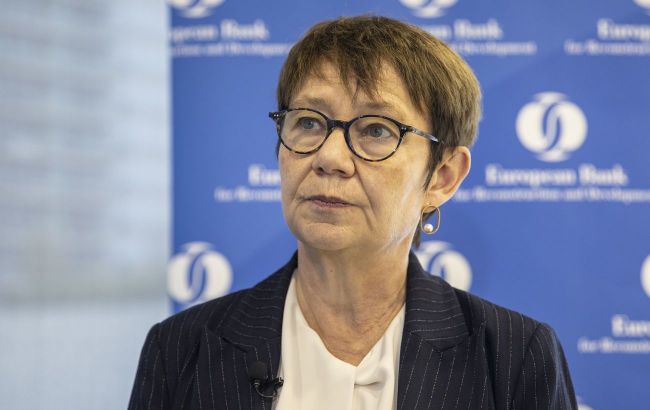EBRD to increase funding for Ukraine's energy system restoration
 Photo: Odile Renaud-Basso, President of the EBRD (Getty Images)
Photo: Odile Renaud-Basso, President of the EBRD (Getty Images)
The European Bank for Reconstruction and Development (EBRD) is exploring the possibility of increasing support to help Ukraine overcome the critical electricity shortage as the country approaches its third winter during wartime, says the bank's President, Odile Renaud-Basso.
Russian attacks have destroyed 80% of coal-fired power plants and a third of hydroelectric plants, forcing Ukraine to implement widespread power outages for households and businesses. The central bank has reduced borrowing costs three times and downgraded its economic growth forecast, partly due to attacks on energy facilities.
This month, the EBRD allocated €300 million to help state energy companies repair damaged facilities and build new decentralized generating capacities. According to the president of the London-based lender, this funding may still increase.
"It is sort of a beginning, a starting point, it can be higher. We are exploring how we can provide support and develop the electricity generation system," Renaud-Basso said, noting that private companies may also qualify for financing.
She stated that the EBRD will continue to provide support ranging from €1.5 to €2 billion per year for infrastructure, energy security, recovery, and modernization. After Russia shifted from attacking power grids to destroying power plants, "businesses need to get more diversified in supplies," Renaud-Basso said.
Economic risks could be exacerbated by a mobilization campaign aimed at repelling the Kremlin's invasion.
"Keeping the economy going is very important, as you need to have tax revenues, electricity, public transportation and have staff able to do that,” Renaud-Basso said. “You need to balance all this," Renaud-Basso said. "All of this needs to be balanced."
Similarly, maintaining the International Monetary Fund's program "will be very important," and authorities will need to implement anti-corruption reforms in line with the agreement to ensure further support, beyond the $2.2 billion loan to cover the budget.
Currently, the prospects for financing Ukraine until the end of this year are stable, as foreign partners are likely to meet their commitments to support the country, Renaud-Basso said.
"But 2025, especially the winter, will be challenging," she said. "More clarity is needed on how to cover the financial gap."
It is worth noting that the National Bank of Ukraine still maintains its April forecast for the volume of electricity shortage in Ukraine. It is expected that in 2024-2025, it will be at the level of 5%. The National Bank also forecasts that Ukraine will increase commercial electricity imports from the EU.

